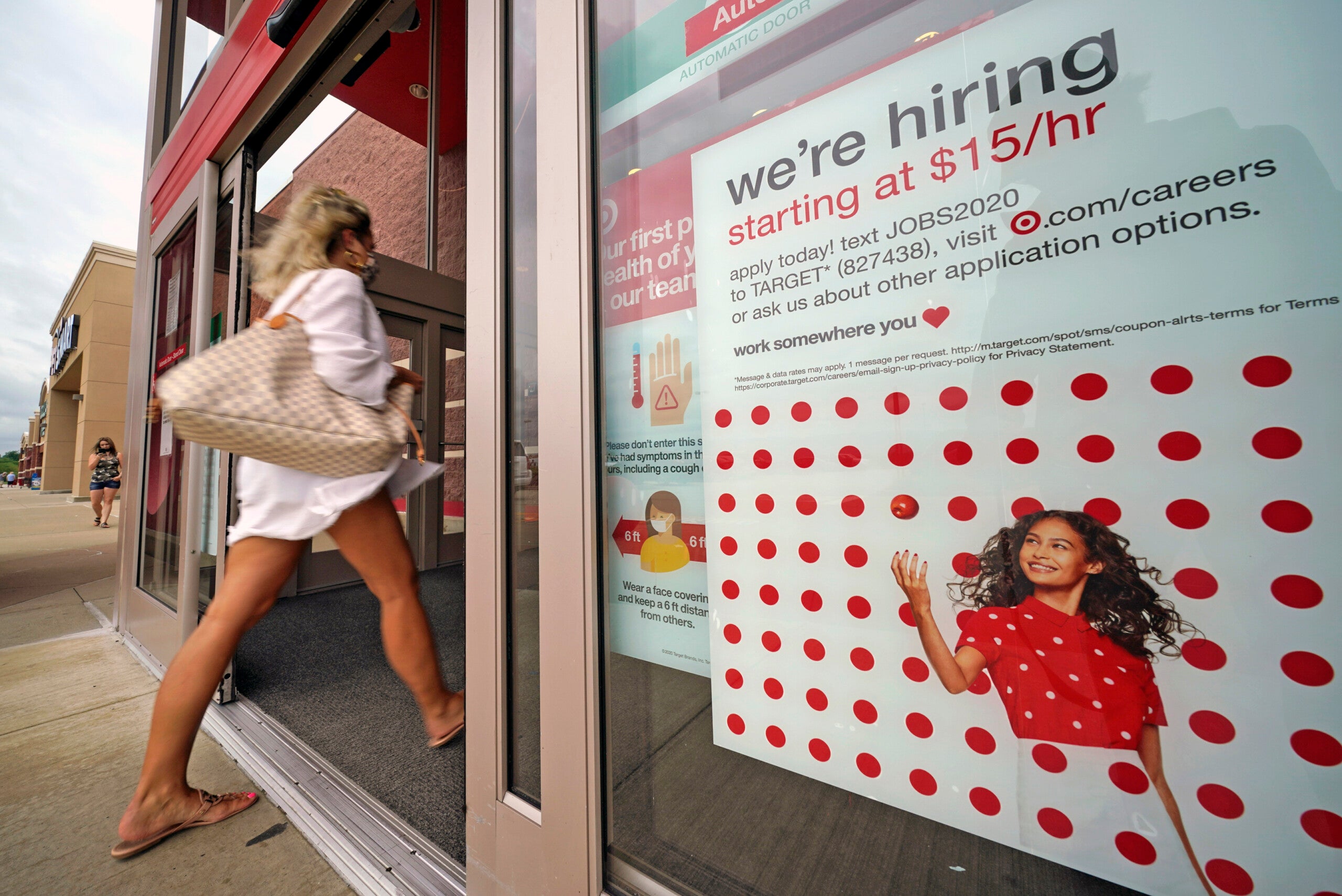US unemployment rate falls to 8.4% even as hiring slows
WASHINGTON (AP) — The U.S. unemployment rate fell sharply in August to 8.4% from 10.2% even as employers slowed their hiring again in one of the final major barometers of the economy to be released before Election Day.
Employers added 1.4 million jobs last month, the Labor Department said Friday, down from 1.7 million in July and the fewest since hiring resumed in May. The economy has recovered barely half the 22 million jobs that vanished when the pandemic paralyzed the nation in early spring.
Economists noted that last month’s sharp drop in the unemployment rate reflected mainly businesses recalling workers who had been temporarily laid off rather than hiring new employees. The influx of those recalled workers has lowered unemployment more quickly than most economists had expected. But many other laid-off Americans now regard their job losses as permanent.
Private companies added just over 1 million jobs in August, with the government providing nearly 350,000 others, including a quarter-million temporary Census workers. That’s down from the 1.5 million jobs that companies added in July and a sign that employers remain cautious about the economic outlook with the pandemic still out of control.
“The fact that employment is settling into a trend of slower, grinding growth is worrisome for the broader recovery,” said Lydia Boussour, an economist at Oxford Economics. Friday’s jobs report “confirms that the labor market has entered a frustratingly slower second phase of the recovery.”
Real-time economic data shows that small-business hiring remains weak. Many industries, especially hotels, restaurants, airlines and entertainment venues are still struggling to survive the loss of customers with confirmed viral cases still high.
Last month’s job growth was most solid among retailers, which added 250,000 jobs, and transportation and warehousing firms, which gained nearly 80,000 and are benefiting from increases in e-commerce.
Manufacturers, which are enjoying a jump in demand, particularly for cars, added just 29,000 jobs, one-tenth of their job growth in June. Construction added just 16,000.
After an epic collapse in the spring, when the economy shrank at a roughly 30% annual rate, growth has been rebounding as states have reopened at least parts of their economies. Yet the recovery remains far from complete.
Many economists think significant hiring may be hard to sustain because employers are operating under a cloud of uncertainty about the virus. Daily confirmed case counts have fallen from 70,000 in June to about 40,000. The decline has leveled off in the past week and the viral caseload remains higher than it was in May and June.
As a result activities like restaurant dining and air travel are still far below pre-pandemic levels. Most economists say a meaningful economic recovery will likely be impossible until the coronavirus is brought under control, most likely from the widespread use of a vaccine.
Friday’s jobs data was the second-to-last employment report — for most voters, the most visible barometer of the economy — before Election Day, Nov. 3. President Donald Trump faces the daunting task of seeking re-election in the worst economic downturn since the 1930s. Yet voters in surveys have generally given him higher marks on the economy than they have on other aspects of his presidency.
The jobs report coincides with growing signs that more companies are making permanent job cuts rather than temporary furloughs. That trend could keep the unemployment rate persistently high. It is typically harder for an unemployed worker to find a new job at a new company or in a new industry than to return to a previous employer.
Casino and hotel operator MGM Resorts, slammed by declines in travel and tourism, said last week that it’s eliminating 18,000 jobs. Coca Cola, which derives half its sales from stadiums, theaters and other venues that have been largely shut down, is offering buyouts to 4,000 employees. Salesforce said it is cutting 1,000 jobs. Bed, Bath & Beyond will shed 2,800.
A Federal Reserve report this week based on anecdotal reports from businesses found “rising instances of furloughed workers being laid off permanently as demand remained soft.”
Roughly 29 million Americans are receiving state unemployment aid, although their total benefits, on average, have shrunk by more than half since the expiration of a $600-a-week federal supplement more than a month ago. The Trump administration has set up a program that will provide some of the unemployed with $300 a week.
But new rules and requirements will make many of the unemployed ineligible. Only people who receive at least $100 a week in state unemployment aid will qualify for the $300 federal supplement — a requirement that could exclude at least 850,000 Americans.
One consequence is that rising stress and anxiety are evident at therapists’ offices and mental health hotlines around the country. Calls from March through July to the U.S. government-funded Disaster Distress Helpline, which offers counseling and emotional support, surged 335% from the same period last year.
And half of U.S. adults reported at least some signs of depression, such as hopelessness, feelings of failure or an inability to derive pleasure from daily activities, in a survey published Wednesday in the medical journal JAMA Network Open. That amounted to twice the rate from a survey two years ago.
“Not many days go by where I don’t have a couple where one partner or both are not working or furloughed,” said Todd Creager, a therapist in Southern California who treats mostly middle- to upper-middle-class adults.
___
Associated Press Writer Lindsey Tanner contributed to this report from Chicago.



